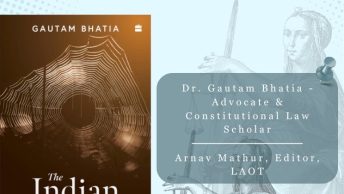T.S.R. Subramanian Debate Continues
The debate over T.S.R. Subramanian continues in the pages of the Indian Express. On Friday, Pratap Bhanu Mehta wrote a whithering critique of the judgment, which takes steps to increase bureaucratic independence, labeling it judicial overreach that allows a middle class agenda to undercut representative democracy. Today, Menaka Guruswamy, one of the primary lawyers for the bureaucrats who brought the case, struck back, arguing in an op-ed that Mehta fundamentally misreads the judgment, which she argues is actually an example of restrained judicial intervention grounded both in sound policy and a careful reading of constitutional text and history. I recommend reading both pieces to gain insight not only into this case, but the larger debate over the Court’s role in shaping the Indian polity.






Both, Mr. Pratap Bhanu's critique and Menaka Guruswamy's reply to it are a treat to read.
However, I think we are still missing something. My point is that the Supreme Court did not give adequate weight and consideration to the arguments raised by the Union of India and the other states.
The state tried to show how it is implementing the recommendations of these committees and commissions. In fact, most of the recommendations have already been implemented. But, Supreme Court did not go into those details.
My personal opinion regarding this case can be found here. http://www.desikanoon.co.in/2013/11/supreme-court-judgment-on-good_1.html